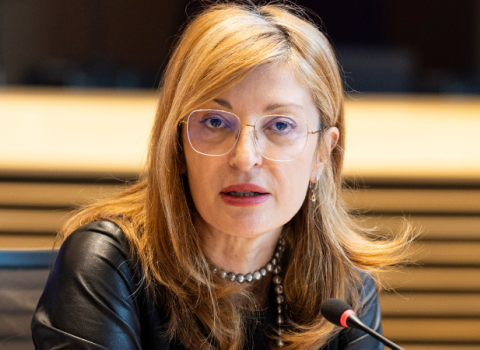The hub in a former warehouse will link industry with Trinity's pioneering research. Portal is financed through a combination of government support, philanthropy and university investment.
Trinity College Dublin has marked the official beginning of its "Portal" regeneration project, which will create a co-working hub at its research and innovation campus in Dublin's Docklands.
Provost Dr Linda Doyle and Dr Tom Kelly, Enterprise Ireland's divisional manager for Cleantech, Electronics and Lifesciences, ceremonially kicked off the renovation project (below) by fitting the first window to the once blocked-up windows of the former shipping merchant’s warehouses on Grand Canal Quay where Portal will be based.
The Department of Enterprise, Trade and Employment (under the Regional Enterprise Development Fund administered by Enterprise Ireland) has provided funding to support the hub at the heart of the Silicon Docks.
Provost Dr Linda Doyle said: “Portal will be a dynamic innovation hub in a bonded warehouse, which will be refurbished for this new use. As such, Portal is leading the way in how we are approaching our Trinity East Campus – making space for brilliant researchers and innovators across all disciplines to come together and do great things in a way that responds to climate change and biodiversity loss.“
Dr Tom Kelly said: “This is an important step forward in ensuring that there is a dedicated space available to entrepreneurs and innovators in the heart of Dublin. Enterprise Ireland is delighted to support Trinity College’s initiative which will generate high-quality jobs, support the development of new talent and have significant economic impact in the city and beyond in the decades ahead.”
Portal Director Mark Bennett said: “The combination of the central location, research expertise and highly skilled talent create an exciting opportunity to support pioneering solutions and successful indigenous enterprises. Portal is also a unique way for Trinity to engage with global corporates and local creative communities.”
This article was first published on 7 June by Trinity College Dublin.





 A unique international forum for public research organisations and companies to connect their external engagement with strategic interests around their R&D system.
A unique international forum for public research organisations and companies to connect their external engagement with strategic interests around their R&D system.